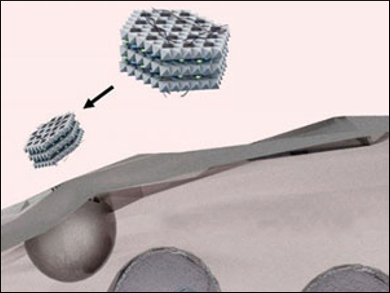Multifunctional nanoparticles are emerging agents against cancer. These nanoparticles are not only used as drug carriers, but also as imaging agents, allowing for guided detection and therapy.
Zhi Ping Xu, Zi Gu, University of Queensland, Brisbane, Australia, and colleagues have fabricated manganese/aluminum-based layered double hydroxide nanoparticles (Mn-LDH, pictured). The team characterized the nanoparticles using various spectroscopic and microscopic techniques, as well as biological assays to evaluate their cytotoxicity, biocompatibility, and biodegradability.
The researchers showed that the Mn-LDH particles can be used as magnetic resonance imaging (MRI) contrast agents. The team also loaded cell-death siRNA (CD-siRNA) into the Mn-LDH and tested its effects on N2a neuroblastoma cancer cells. They found that the loaded nanoparticles can kill N2a cells in a dose-dependent manner (up to 60 % cell viability via MTT assay at 40 nM concentration) in contrast to free CD-siRNA (100 % cell viability, not significantly different from untreated cells). The team attributes this effect to the improved cell uptake of CD-siRNA loaded into nanoparticles. This strategy could assist in optimizing personalized treatments.
- MnAl Layered Double Hydroxide Nanoparticles as a Dual-Functional Platform for Magnetic Resonance Imaging and siRNA Delivery,
Huali Zuo, Weiyu Chen, Bei Li, Kewei Xu, Helen Cooper, Zi Gu, Zhi Ping Xu,
Chem. Eur. J. 2017.
DOI: 10.1002/chem.201702835



